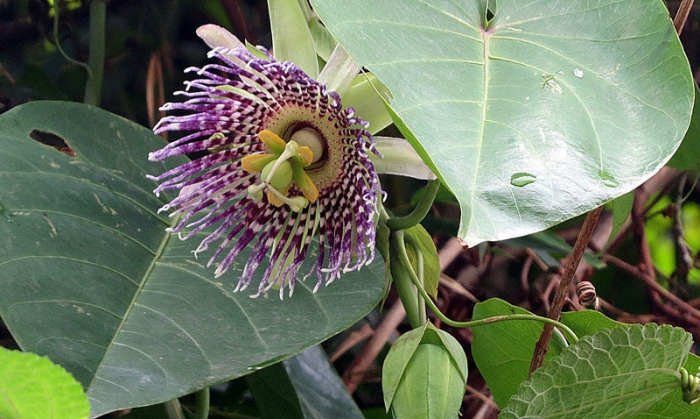Sweet Granadilla
(Passiflora ligularis)
Sweet Granadilla (Passiflora ligularis)
/
/

Dick Culbert from Gibsons, B.C., Canada
CC BY 2.0
Image By:
Dick Culbert from Gibsons, B.C., Canada
Recorded By:
Copyright:
CC BY 2.0
Copyright Notice:
Photo by: Dick Culbert from Gibsons, B.C., Canada | License Type: CC BY 2.0 | License URL: https://creativecommons.org/licenses/by/2.0 | Uploader: Uleli | Publisher: Wikimedia Commons | Title: Passiflora_ligularis_(14642851748).jpg | Notes: {{Information |Description={{en|Dr Russell Sharp Lancaster University Lancaster United Kingdom}} |Source=Transferred from [http://en.wikipedia.org en.wikipedia] |Date={{Date|2007|09|18}} (original upload date) |Author= [[:en:User:Sup



































Estimated Native Range
Summary
Passiflora ligularis, commonly known as Sweet Granadilla, is an evergreen perennial vine native to montane forests in the Andes from Venezuela to Bolivia, including Panama and Peru. It is a climbing plant that can produce stems up to 5 meters (16 ft) long, which scramble over the ground or clamber into the surrounding vegetation using coiling tendrils. The leaves are abundant, simple, and dark green. The plant is notable for its greenish-white flowers that bloom throughout the year, depending on the climate, with a peak in late winter to early spring. The flowers are fragrant and attractive to pollinators. The fruit is round, orange to yellow with small light markings, and has a hard, slippery outer shell with soft padding inside to protect the seeds. The sweet, aromatic pulp inside the fruit is edible and highly valued for its flavor.
Sweet Granadilla is appreciated for its ornamental flowers, delicious fruit, and as a host plant for butterfly larvae. It is used in gardens for trellises, arbors, and fences, and is also grown commercially for its fruit. In cultivation, it prefers full sun to partial shade, consistent medium watering, and well-draining soil. It can tolerate a range of soil types but thrives in rich, loamy soils. While it is not particularly susceptible to diseases, it can attract pests such as aphids and mealybugs. Gardeners should be aware that in some regions, it can become invasive due to its vigorous growth and should be managed accordingly.CC BY-SA 4.0
Sweet Granadilla is appreciated for its ornamental flowers, delicious fruit, and as a host plant for butterfly larvae. It is used in gardens for trellises, arbors, and fences, and is also grown commercially for its fruit. In cultivation, it prefers full sun to partial shade, consistent medium watering, and well-draining soil. It can tolerate a range of soil types but thrives in rich, loamy soils. While it is not particularly susceptible to diseases, it can attract pests such as aphids and mealybugs. Gardeners should be aware that in some regions, it can become invasive due to its vigorous growth and should be managed accordingly.CC BY-SA 4.0
Plant Description
- Plant Type: Vine
- Height: 15-75 feet
- Width: 0.7-1 feet
- Growth Rate: Rapid
- Flower Color: Purple, White
- Flowering Season: Spring, Summer, Fall
- Leaf Retention: Evergreen
Growth Requirements
- Sun: Full Sun
- Water: Medium
- Drainage: Medium, Fast
Common Uses
Bee Garden, Bird Garden, Butterfly Garden, Edible*Disclaimer: Easyscape's listed plant edibility is for informational use. Always verify the safety and proper identification of any plant before consumption., Fragrant, Hummingbird Garden, Showy Flowers
Natural Habitat
Montane forests in the Andes from Venezuela to Bolivia, including Panama and Peru
Other Names
Common Names: Yellow Passionfruit, Grenadia, Granadilla, Granadilla De China, Parchita Amarilla
Scientific Names: , Passiflora ligularis, Passiflora tiliifolia, Passiflora serratistipula, Passiflora ligularis var. geminiflora, Passiflora lowei,
GBIF Accepted Name: Passiflora ligularis A.Juss.